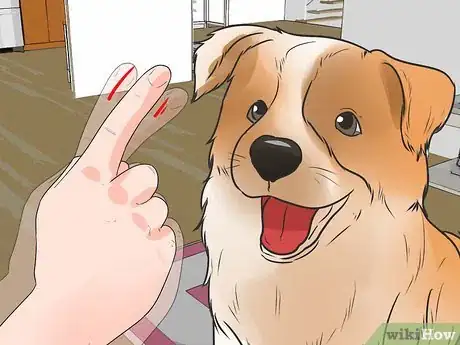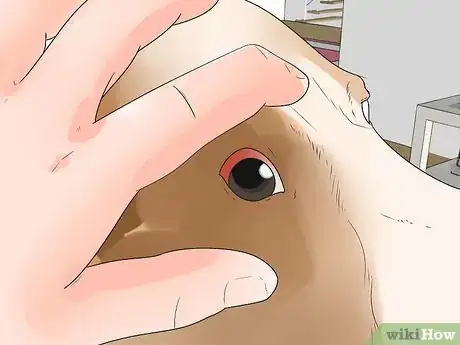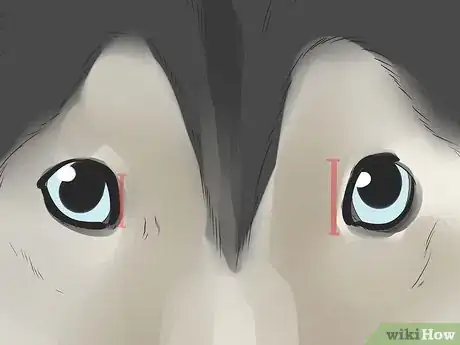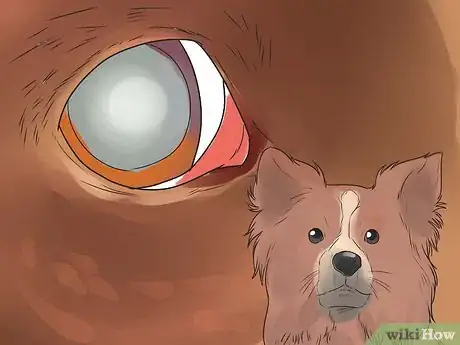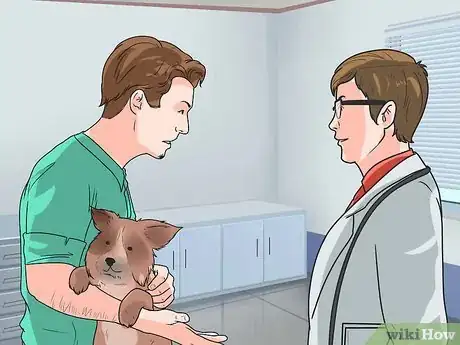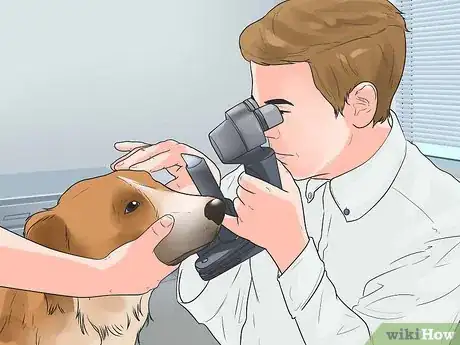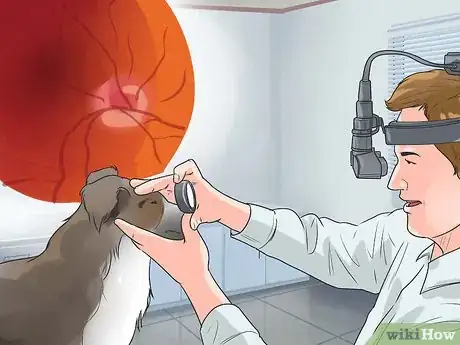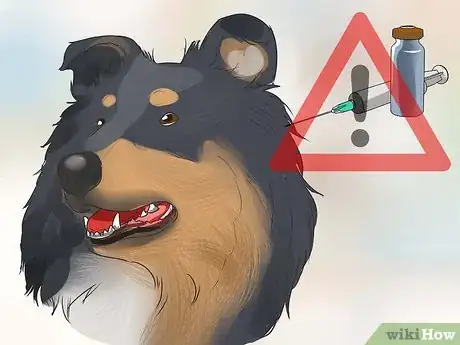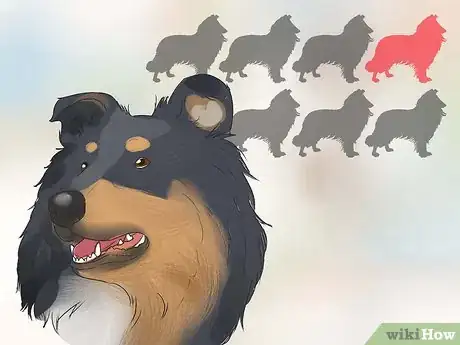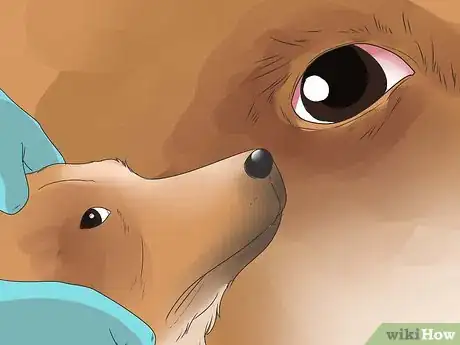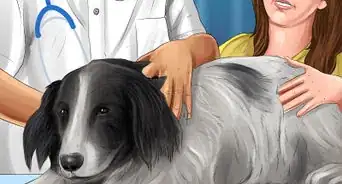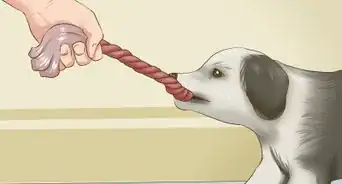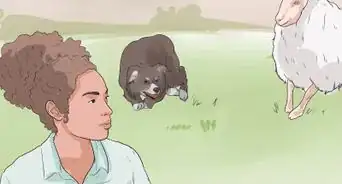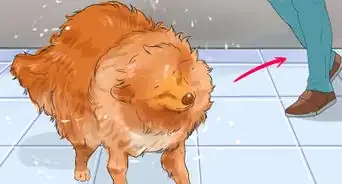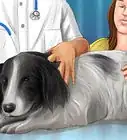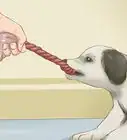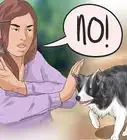This article was co-authored by Pippa Elliott, MRCVS. Dr. Elliott, BVMS, MRCVS is a veterinarian with over 30 years of experience in veterinary surgery and companion animal practice. She graduated from the University of Glasgow in 1987 with a degree in veterinary medicine and surgery. She has worked at the same animal clinic in her hometown for over 20 years.
This article has been viewed 15,974 times.
Collie eye is more correctly known as Collie Eye Anomaly (CEA) or choroidal hypoplasia. It is an inherited genetic condition present from birth that adversely affects eyesight. Mildly affected individuals may not show any signs of visual difficulties, but more severely affected dogs will be blind.[1] If you have a Sheltie, you can learn to diagnose Collie eye so you can give your dog a healthy life.
Steps
Recognizing the Symptoms of CEA
-
1Test your dog’s eyesight. If you want to know if your Sheltie has CEA, then test his eyesight. In mild cases, your dog may be able to see well enough to cope. In severe cases, your dog may be blind.[2]
- Place objects in your dog’s path and see if he avoids them or bumps into the obstruction.
- Take your dog on a walk along an unfamiliar route. See if he runs ahead to explore or walks hesitantly by your side as if unsure of his footing.
- Wag your finger toward your dog’s eyeball and see if he blinks reflexively. Be careful that you don't create an air current when doing this or the dog may sense the air movement on his whiskers and blink because of that.
-
2Check your dog’s pupils. Watch the size of your dog's pupils and see if they become small in bright light. If the pupils remain large in bright sunshine, then there is likely a problem with the eye.[3]Advertisement
-
3Compare eye size. Carefully compare the size of one of the eye globes with the other. It's not common, but sometimes CEA can affect the size of the globe and result in a smaller than usual eye.[4]
-
4Look for other eye abnormalities. In rare cases, some other symptoms may present. Other symptoms that may arise are eyes that are sunken in the sockets or a cloudy film over the eyes.[5]
Diagnosing CEA
-
1Take your sheltie to a veterinary ophthalmologist. CEA is present at birth. The ideal time for a veterinary ophthalmologist to examine the eye is around five to eight weeks of age. This catches the pup in a sweet spot where the eye is big enough to examine, but before retinal pigments develop which can obscure the signs the specialist is looking for.[6]
- Most adoptions occur after eight weeks of age. Talk to the breeder to see if the sheltie has been checked for CEA. If he hasn’t, take him to the vet.
-
2Get an eye exam. When you take your dog to the veterinary ophthalmologist, the specialist examines the pup in a dark room. She will use a tool called an ophthalmoscope, which is part lens and part light source. She will shine the ophthalmoscope on the back of the eye and look for patches that are unusually transparent and through which the blood vessels are easily seen. This indicates the presence of CEA.[7]
-
3Examine the optic nerve. The specialist will also examine the area around the optic nerve to see if the blood vessels suddenly disappear over the edge of a coloboma. She will also check to see if the retina is attached properly, or floating detached from the choroid.[8]
-
4Know that the CEA gene cannot be detected by diagnosis. Unfortunately, an optical exam does not help detect dogs that carry the CEA gene who are not affected themselves. However, a genetic test is now available to detect the gene.[9]
- A blood sample is sent to a specialist lab where it is screened for the mutation.
- Ideally all Shelties should be genetically screened prior to breeding, and only dogs that are completely healthy used as breeding stock.
Understanding CEA
-
1Know there is no treatment. If your dog is diagnosed CEA, the condition shouldn’t worsen. Most dogs live long, healthy lives with little eyesight problems. Unfortunately, there is no treatment or cure for CEA.[10]
- Awareness of the condition is crucial. Affected dogs should not be bred since the genetic mutation can be passed down to the offspring.
-
2Know where most cases occur. In Shelties, the numbers affected by CEA are considerably higher in Europe than in the United States. The incidence in the US is thought to be around 0.39%, which means around four dogs in every 1000 are affected.[11]
-
3Be aware of related problems. CEA can be associated with other problems, like a coloboma, which is like a crater that forms around the optic nerve. Sometimes, the retina separates completely from the choroid and the dead space can fill with blood.[12]
- If your dog has a coloboma, your dog can get surgery to help with that.[13]
- Surgery may also be suggested if there is a threat of retinal detachment.
References
- ↑ http://www.petmd.com/dog/conditions/eyes/c_dg_collie_eye_anomaly
- ↑ http://www.pethealthnetwork.com/dog-health/dog-diseases-conditions-a-z/collie-eye-anomaly-cea
- ↑ https://www.optigen.com/opt9_test_cea_ch.html
- ↑ http://www.petmd.com/dog/conditions/eyes/c_dg_collie_eye_anomaly
- ↑ http://www.petmd.com/dog/conditions/eyes/c_dg_collie_eye_anomaly
- ↑ http://www.petmd.com/dog/conditions/eyes/c_dg_collie_eye_anomaly
- ↑ https://www.optigen.com/opt9_test_cea_ch.html
- ↑ https://www.optigen.com/opt9_test_cea_ch.html
- ↑ https://www.optigen.com/opt9_test_cea_ch.html
About This Article
If you’re unsure whether your Sheltie has collie eye, watch the size of its pupils under bright light, which will remain dilated if it has collie eye. Another way to test your Sheltie’s eyesight is by wagging your finger towards its face and seeing if it blinks properly. If it doesn’t blink, it’s possible that it has collie eye. You should also check if its eyes are sunken or have a cloudy film over them, which are signs of collie eye. If you think your dog might have problems with its eyesight, take it to a veterinary ophthalmologist for an eye test. For more tips from our Veterinary co-author, including how to recognize other problems related to collie eye, read on!
